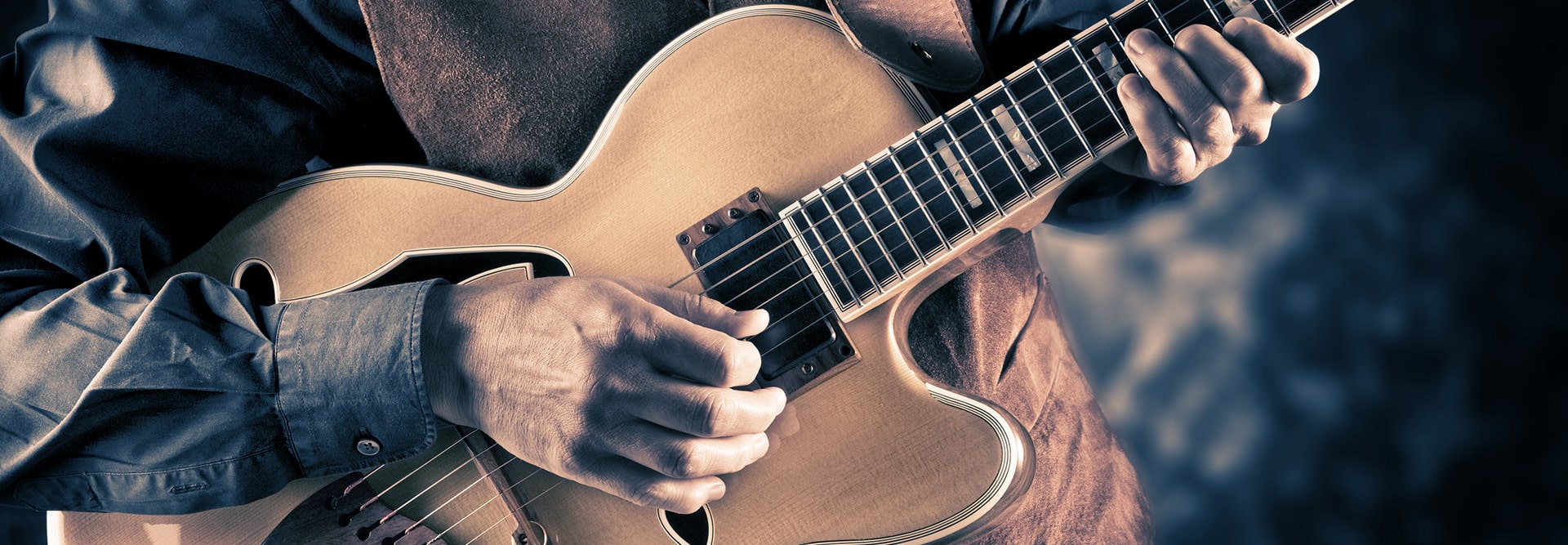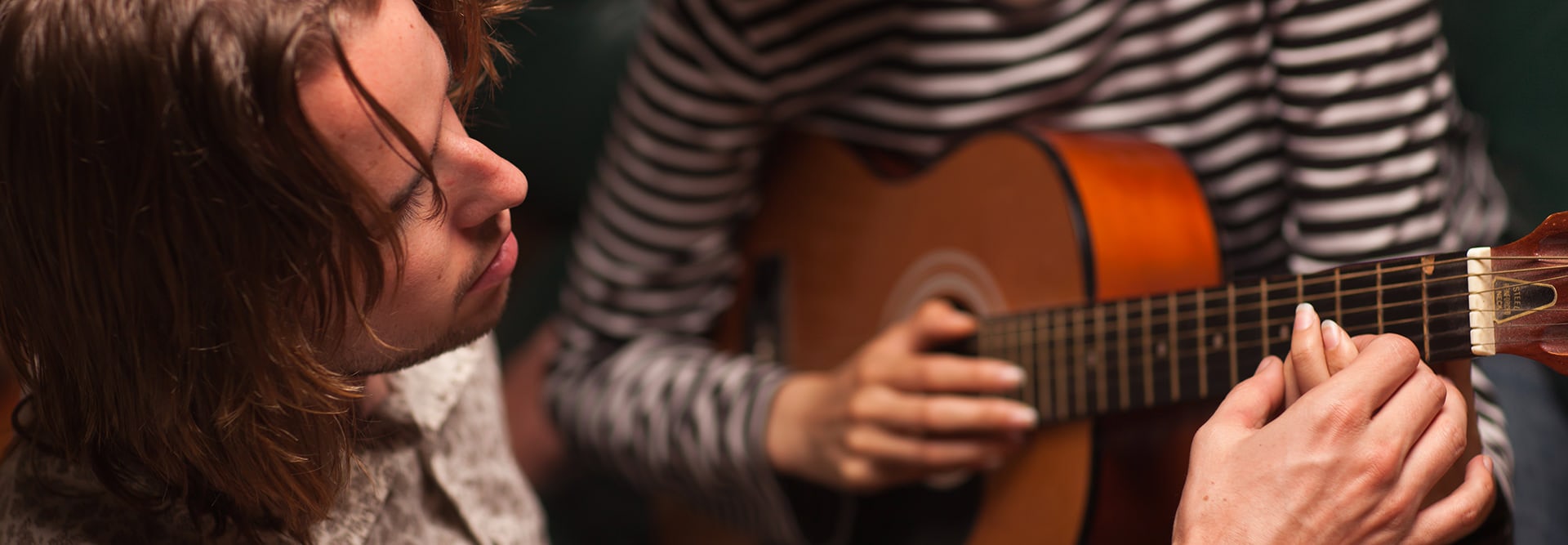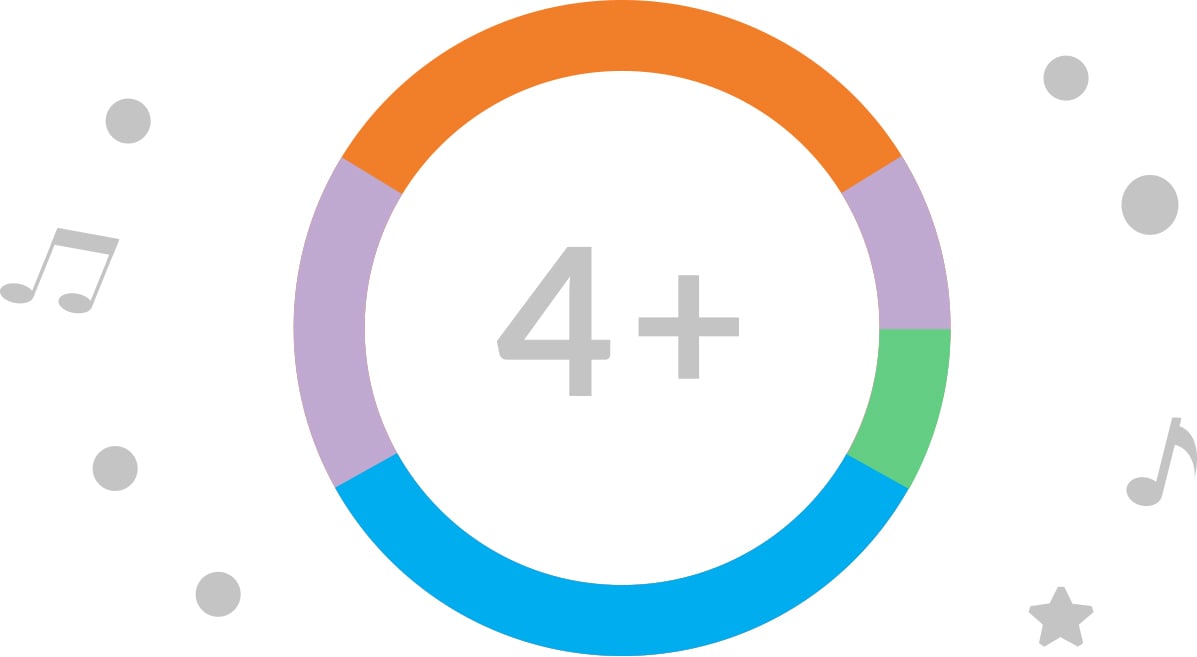Learning how to play guitar is a great experience for adults and children alike. Used in many different genres of music, including but not limited to rock, blues, jazz, soul, reggae, latin, and metal, playing the guitar can be a fun hobby, a professional musical career, or anything in between! Whatever you are looking to accomplish, Musika’s network of teachers work with students of all ages and experience levels to get you where you want to go.
The guitar is a (typically) six stringed instrument that is played by strumming the strings either with your fingers or with a pick. The other hand presses down various strings on the fretboard to produce different notes which can be played on their own or which can make up chords when played together. Since many popular songs are made up of only a few chords, they can be easy even for beginning students to learn to play on guitar. This guide can help familiarize you with your guitar before your first lesson!





